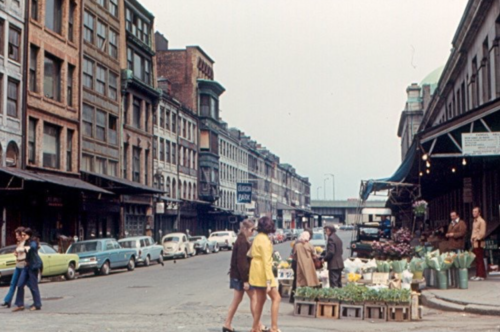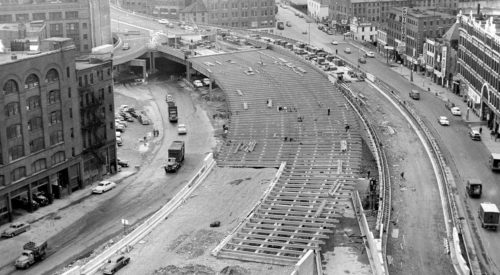
Mayor Kevin White was a proponent of the New Boston. But with an asterix. The Scollay Square and West End demolitions had left a bad taste in the mouths of locals. Look it up. It was tragic. White’s thought, a good one, was to pluck a gem from a coal mine, ruffle no feathers with demolition, and make Quincy Market—directly across Congress St from his office—a repurposed historic building that will bring people back to a neglected area to shop, sightsee and socialize. Since the 60s the then 140 year old Greek Revivalist gem had fallen into disrepair as the suburbs grew.
The Central Artery cut the building off from the ports of entry on the water and easy street access in an era where the automobile had yet to clog the streets.

This was once where locals and distant markets had come to get fresh meat, dairy and produce. That all faded as the area was overcome by suburban traffic overhead on what was known as the “Other Green Monstah.”
Following a building redesign plan by Benjamin Thompson & Associates and landscape redesign by Pressley Associates, Quincy Market reopened in August, 1976 amid city wide fanfare as the Bicentennial Summer reached its peak.
To paraphrase Yogi Berra, the place got so popular nobody went there anymore. Bostonians by and large avoided the place like the plague, seeing it as a tourist trap filled with stores selling stuff they didn’t need. What self respecting DOB type wore Fiorucci? So its international success made it a local failure on that level but Kevin White’s legacy was solidified. Crumbling cities were seen through a new lens. The beauty was the repurposing but The bane of it was the new purpose to the repurposing. Some days ya just can’t win.
**
Jim Botticelli administers the popular Facebook and Instagram pages Dirty Old Boston. He is the author of Dirty Old Boston: Four Decades of a City In Transition available from local independent bookstores.











